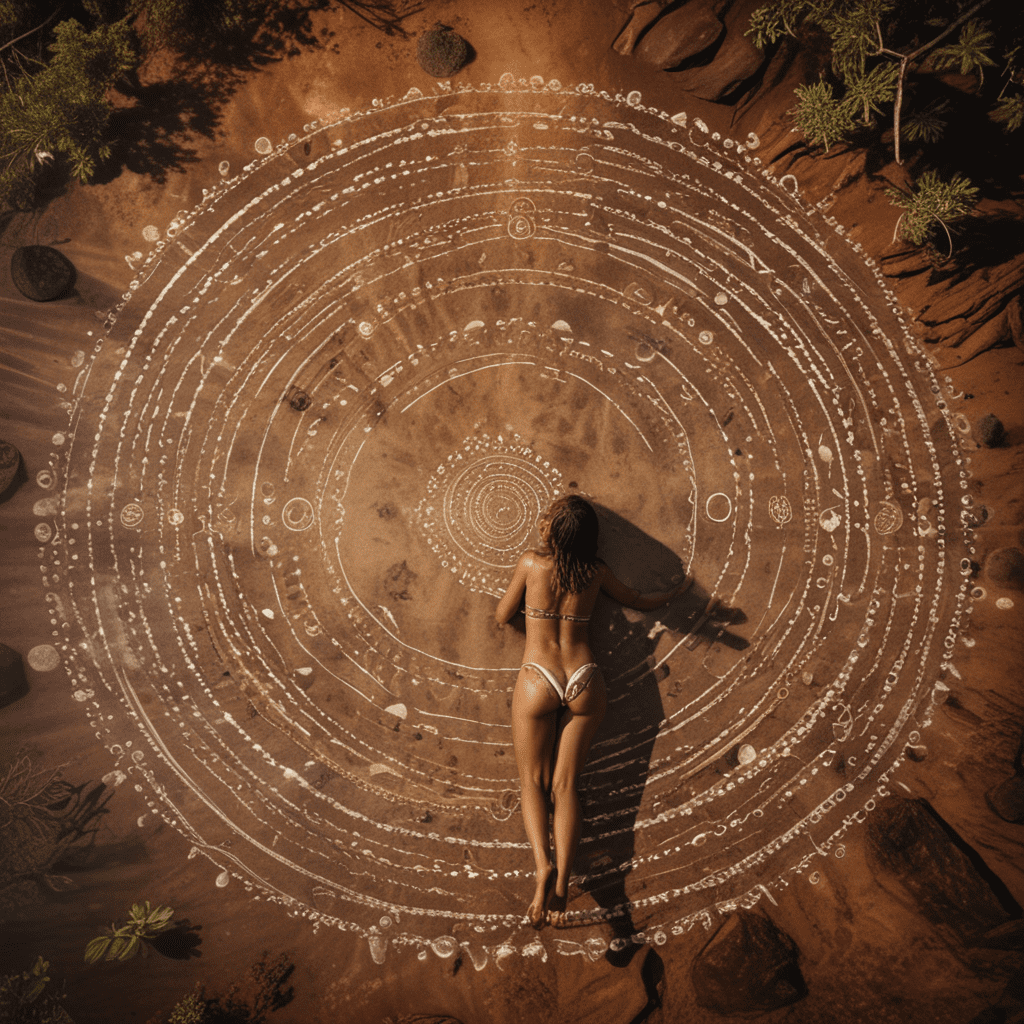1. Introduction to Dreaming Tracks and their Significance
Dreaming Tracks hold profound significance in the cultural fabric of Australian Aboriginal communities, embodying the spiritual, cultural, and historical connection between the people and their ancestral lands. These sacred pathways are believed to have been created by ancestral beings during the Dreaming, the Aboriginal creation period. Dreaming Tracks traverse the land, connecting significant sites, water sources, and landmarks, and serve as a critical foundation for understanding the Aboriginal worldview and cultural identity.
2. Creation and The Dreaming
According to Aboriginal mythology, the Dreaming refers to a timeless realm where ancestral beings known as the 'Ancestral Beings,' or 'Dreamtime Ancestors,' created the world through their actions and movements. The Dreaming is not a static event but an ongoing process, as the Ancestral Beings continue to shape and influence the world through their Dreaming Tracks. These tracks are seen as tangible manifestations of the Ancestral Beings' journeys, recording their movements and interactions during the Dreaming.
3. The Role of Ancestral Beings
The Ancestral Beings hold a central place in Aboriginal spirituality and are considered the creators and guardians of the Dreaming Tracks. These beings, often depicted as animals, plants, or natural features, hold immense spiritual power and are deeply respected and revered by Aboriginal people. The Dreaming Tracks serve as pathways through which these Ancestral Beings continue to manifest their presence and influence in the world. By following these tracks, Aboriginal people connect with their ancestors and the Dreaming, gaining insights into their origins and their responsibilities as custodians of the land.
4. Dreaming Tracks as Pathways through the Landscape
Dreaming Tracks extend across the Australian landscape, forming intricate networks of interconnected paths that span great distances. These pathways are not merely physical trails but also spiritual and cultural routes that provide guidance and direction to Aboriginal people. By following Dreaming Tracks, individuals can navigate the land, locate important resources, and connect with sacred sites. These tracks also serve as a way of mapping and understanding the landscape, providing a deep understanding of the ecological relationships and interconnectedness of all living things.
5. Dreaming Tracks and Cultural Identity
Dreaming Tracks play a crucial role in shaping Aboriginal cultural identity and determining group affiliations. Each Aboriginal clan or language group has its own unique set of Dreaming Tracks that connect them to specific ancestral lands and stories. By passing down knowledge of Dreaming Tracks through generations, Aboriginal people maintain their cultural identity and connection to their ancestors. These tracks serve as a living record of the history, laws, and customs of each Aboriginal group, ensuring the continuity and transmission of cultural heritage.
6. Dreaming Tracks in Storytelling and Art
Dreaming Tracks are a rich source of inspiration for Aboriginal storytelling and artistic expression. They provide a framework for recounting ancestral journeys, creation myths, and cultural narratives. Storytelling is an important way of passing on knowledge and maintaining cultural continuity, and Dreaming Tracks play a central role in this process. Aboriginal art, including paintings, carvings, and sculptures, often depicts Dreaming Tracks, representing the connections between land, culture, and ancestry. Through art, Aboriginal people share their stories, preserve their cultural knowledge, and communicate their worldview with others.
7. The Relationship between Dreaming Tracks and Spirituality
Dreaming Tracks have a profound spiritual significance for Aboriginal people. They are seen as pathways to the spiritual realm, allowing individuals to connect with their ancestors, the Ancestral Beings, and the Dreaming. Through ceremonies, rituals, and meditation, Aboriginal people engage with Dreaming Tracks, seeking guidance, healing, and spiritual connection. These tracks serve as a bridge between the physical and spiritual worlds, providing a means for individuals to access the wisdom and power of the Ancestral Beings.
8. Dreaming Tracks and the Environment
Dreaming Tracks are deeply intertwined with the natural environment, as they often follow rivers, creeks, mountain ranges, and other natural features. These tracks reflect the intricate relationship between Aboriginal people and the land, showcasing their understanding of the ecological systems and the importance of preserving the natural world. By following Dreaming Tracks, Aboriginal people actively engage with their environment, respecting and caring for the plants, animals, and waterways that they encounter.
9. Preserving and Protecting Dreaming Tracks
Due to their cultural and spiritual significance, Dreaming Tracks have been passed down through generations and continue to hold immense value for Aboriginal communities. However, these tracks face threats from modern development and environmental degradation. Aboriginal people work tirelessly to protect and preserve Dreaming Tracks, ensuring their continued existence for future generations. This involves advocating for land rights, protecting sacred sites, and promoting sustainable land management practices.
10. The Continuing Relevance of Dreaming Tracks in Modern Australia
Dreaming Tracks remain highly relevant in contemporary Australian society, serving as a reminder of the rich cultural heritage and spiritual beliefs of Aboriginal people. They continue to play a vital role in Aboriginal identity, land management, and artistic expression. Non-Aboriginal Australians have an increasing appreciation for Dreaming Tracks, recognizing their significance in understanding the country's history and ecology. Through reconciliation and dialogue, Australians are working together to protect and preserve these sacred pathways, ensuring their enduring legacy for both Aboriginal and non-Aboriginal people alike.
Frequently Asked Questions
What is the significance of Dreaming Tracks?
Dreaming Tracks hold profound spiritual, cultural, and historical significance for Aboriginal people, representing the journeys and actions of ancestral beings during the Dreaming. They serve as pathways through the landscape, connecting sacred sites and landmarks, and provide guidance and direction to individuals.
How do Aboriginal people use Dreaming Tracks?
Aboriginal people follow Dreaming Tracks to navigate the land, locate resources, and connect with sacred sites. These tracks also have cultural significance, as they are associated with specific clans and language groups and help shape Aboriginal cultural identity.
Why are Dreaming Tracks important to protect?
Dreaming Tracks are of immense cultural and spiritual value to Aboriginal people and are an integral part of their cultural heritage. Protecting these tracks ensures their continued existence for future generations and supports the preservation of Aboriginal knowledge, beliefs, and practices.



